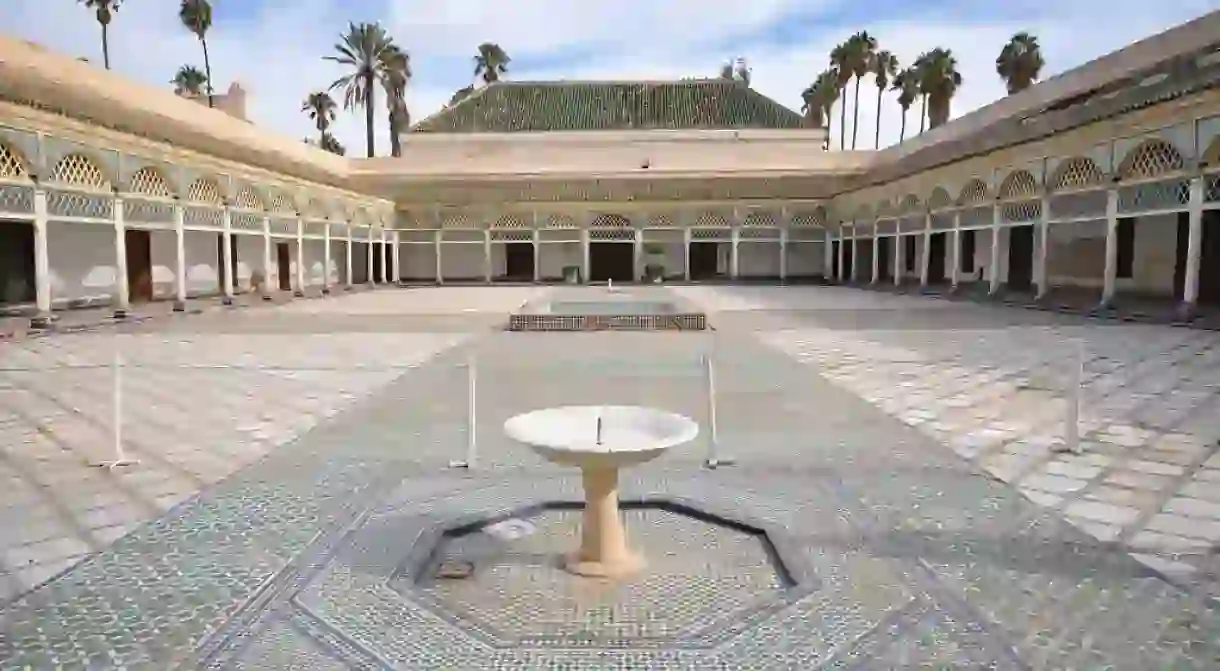History Of Bahia Palace In Marrakech In 1 Minute

The Bahia Palace, meaning brilliance in Arabic, is perhaps one of the best-preserved historical sites and certainly most interesting in Marrakech. Built between 1866 and 1867 by Si Moussa, this sprawling palace is set over two acres in the middle of the Marrakech medina and features 150 rooms, including a harem section located just off the sun-filled Court of Honour. Having housed the Resident General during the French Protectorate era, today the Bahia Palace is a must-see historical museum open to the public daily and has previously hosted events such as the Marrakech Biennale.
Originally built for the personal use of Si Moussa, Grand Vizier of the Sultan, a former slave who climbed the ranks, the house was soon after occupied by his son Bou Ahmed. He slyly rose to power in 1894 when he managed to gain complete control over the state until his death in 1900. It was during Bou Ahmed’s reign that the brilliance of the palace was really enhanced with the addition lush gardens, the small riad surrounding private gardens (of which visitors today pass through immediately upon entering the palace area) and each of the rooms decorated in truly elegant Moroccan style – carved stucco and cedarwood to decorate each of the rooms.
The palace houses council rooms with impressive zellig fireplaces, flooring and painted cedarwork, a large riad surrounded by citrus trees, and the Court of Honour that was built during Si Moussa’s power. The palace was also the residence of Bou Ahmed, his four wives and several concubines. Though the harem, as it is often known, is off-limits to visitors, you can visit the traditional style gardens that are filled with orange trees and splashing fountains with living quarters and apartments, most notably that of his wife Lalla Zinab. Beautifully zellig-tiled fireplaces and floors and colourful stained-glass windows create colourful patterns in the afternoon sun, and beautifully painted and carved cedarwood are just some of the interesting features in his wife’s apartment.

Following Bou Ahmed’s death in 1900, it is said that the palace was ransacked and all valuables were removed. With the arrival of the French in the early 1900s, the residents were forced to move out to make way for the Resident General. In her book, In Morocco, Edith Wharton describes her stay her during the Protectorate years, a Marrakech must-read for those looking for more about the Bahia Palace.
Opening times: 9 am to 4 pm daily. Closed during religious holidays.













